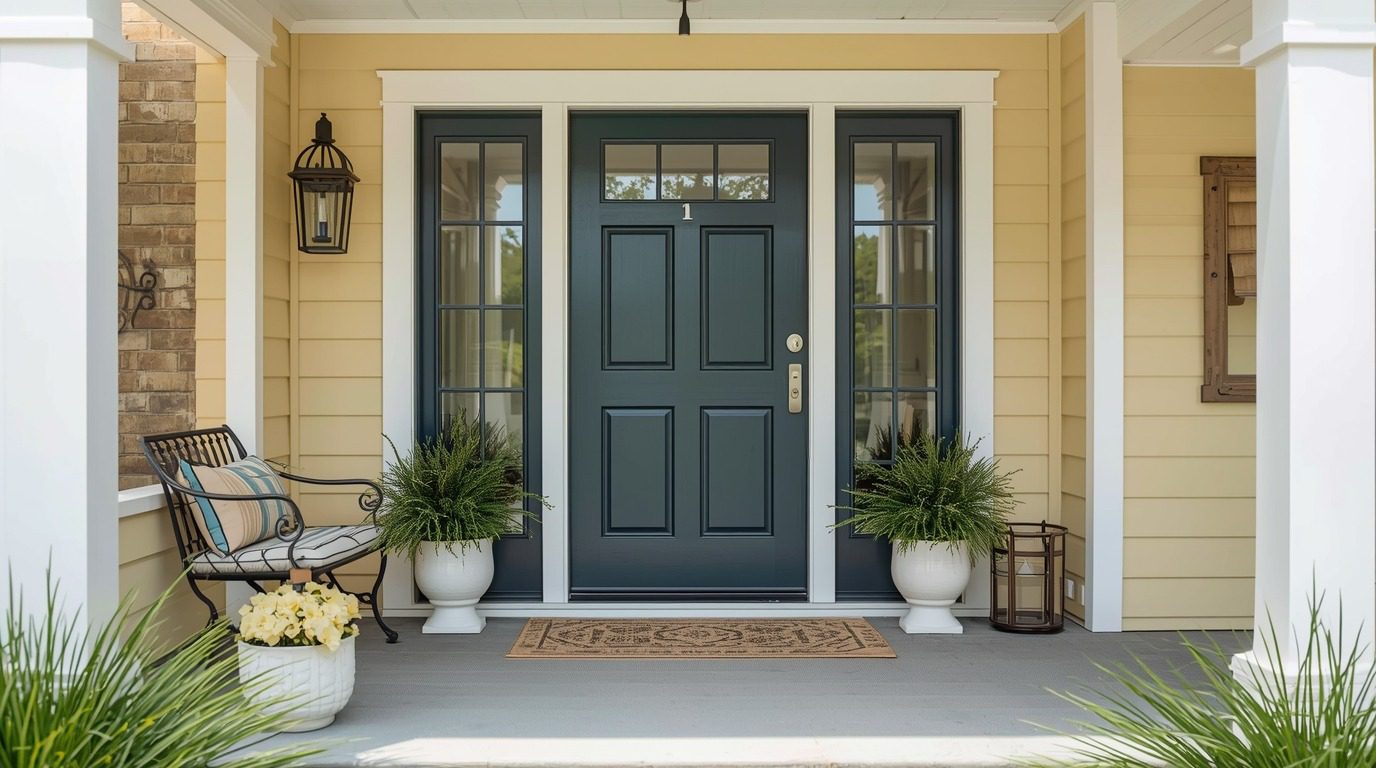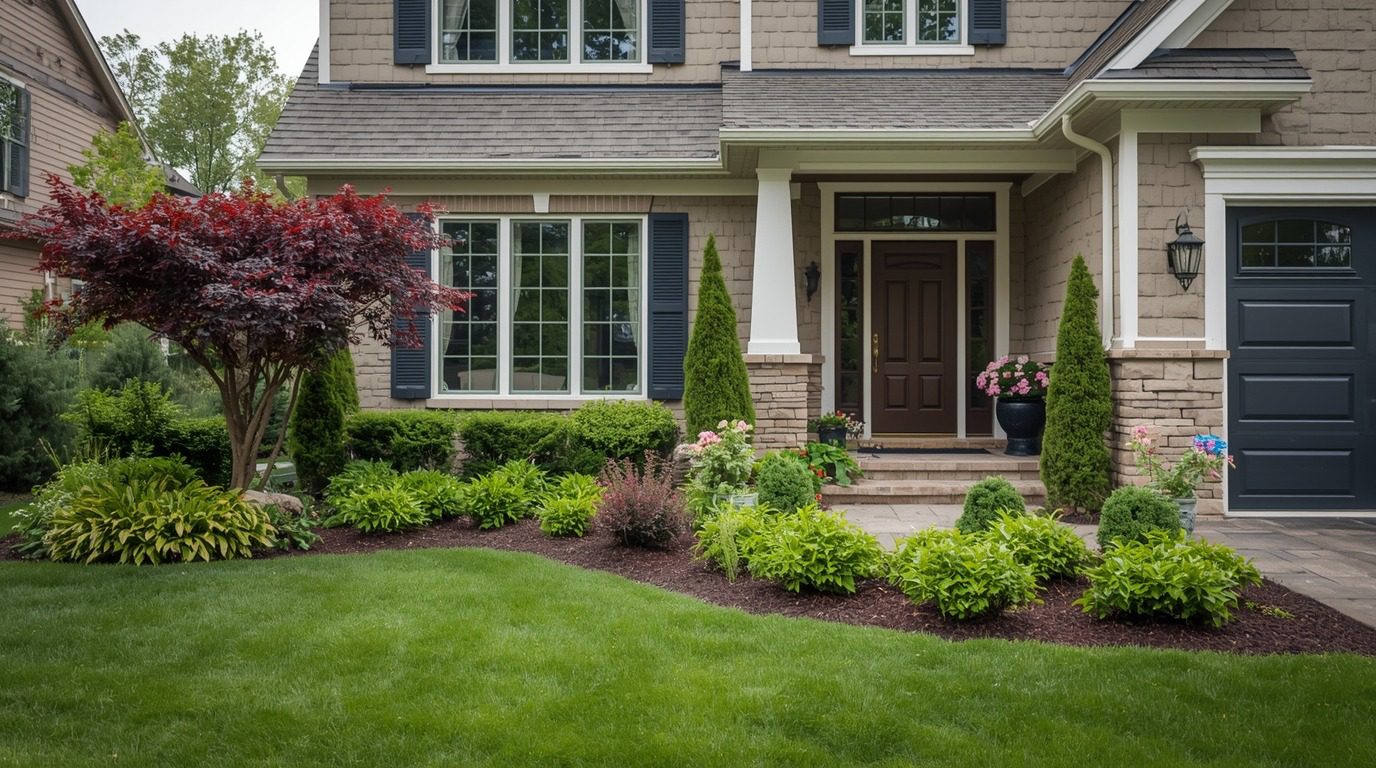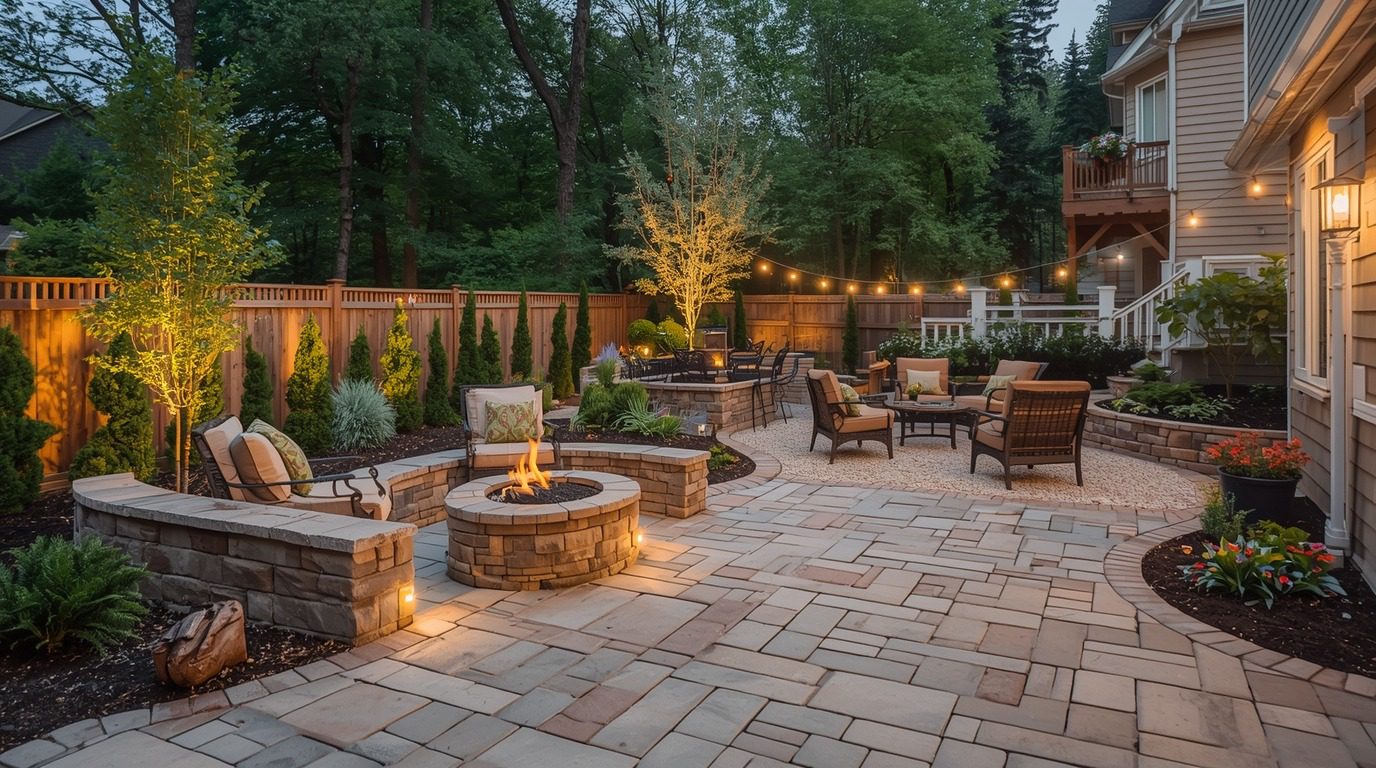When you pull into your driveway after a long day, the first thing that greets you is the façade, the lawn, and the pathway. Every detail outside your home adds up to what we call “curb appeal”, and it’s not just about impressing neighbours or potential buyers.
A thoughtfully designed exterior creates pride, peace, and that unmistakable feeling of home. It can also boost your home’s value in ways that go beyond money. If you’ve been thinking about ways to elevate your property’s exterior, let’s dig into how a few creative touches can transform your home from average to extraordinary.

Start With the Big Picture
Before you dive into materials, plants, or paint, take a step back. I mean, literally stand across the street and look at your home as if you were seeing it for the first time. Maybe the walkway is cracked, the shutters have faded, or the porch could use a little more personality. Good exterior design starts with balance and proportion. Think of the home’s shape, roofline, and symmetry. When everything looks cohesive, windows matching the scale of the siding, trim framing the home neatly, and colors complementing the landscape, the overall look feels intentional and inviting.
Refresh Your Front Door and Entryway

Your front door says a lot about your home’s personality. A fresh coat of paint, such as navy, hunter green, or even a sunny yellow, can instantly energize your entryway. Add sleek hardware, a new doormat, and maybe a couple of potted plants on either side to frame the door. If you’ve got a covered porch, make it cozy. A weatherproof bench, a hanging lantern, or a small coffee table can make the space feel like an extension of your living room. Your entryway sets the tone for your home, so make sure it feels as welcoming as the interior.
Upgrade Lighting for Style and Security
Exterior lighting does double duty. It highlights architectural features while keeping pathways safe at night. Swap out dated fixtures for something modern and energy-efficient. Black matter lanterns, brass sconces, or even motion-sensor path lights can make a world of difference.
Consider layering your lighting: one source for the porch, one for pathways, and another for accenting your favorite tree or garden bed. Smart LED lighting can even be automated or dimmed to match the evening mood; warm glow for dinner on the porch, bright and secure when guests arrive.
Focus on Landscaping That Complements the Home

Landscaping is often the most overlooked part of exterior design, yet it’s one of the most transformative. Lush greenery, clean edging, and seasonal blooms can enhance the home’s structure and soften its lines. Choose native plants for easy maintenance and better resilience through changing seasons.
A well-designed yard isn’t just about what plants you choose, but how you organize them. Layer height and texture, taller shrubs at the back, flowering perennials in front, and an ornamental plant can help define spaces beautifully. Curb appeal starts at the front yard. Check this Ontario landscaping guide for expert recommendations that fit your region’s soil, sunlight, and weather conditions.
Modernize Your Exterior Materials
Siding, roofing, and trim are the backbone of your home’s exterior design. If they’re outdated or worn, upgrading can dramatically improve both appearance and durability. Fiber-cement siding, for instance, resists weather damage and gives a clean look. Stone veneer adds texture and a sense of luxury without the full cost of real stone.
When it comes to roofing, architectural shingles or metal roofing not only look more refined but also improve energy efficiency and increase value. Moreover, don’t forget about trim; clean, crisp lines around windows and doors pull the design together like a well-tailored suit.
Add Hardscaping for Structure and Style

Think of patios, pathways, retaining walls, and driveways. Hardscaping adds structure to your outdoor space while boosting usability. A flagstone walkway or interlocking brick driveway instantly elevates curb appeal, while a new patio can extend your living space outdoors. Texture plays a big role here. Combining materials like concrete, gravel, and natural stone creates visual contrast and depth. Add a small seating area with outdoor furniture and string lights, and suddenly your backyard becomes the perfect weekend hangout.
Play with Paint and Color Coordination
Color can transform a house faster than almost any other upgrade. The key is choosing shades that complement each other and the environment. Neutral tones like soft grays, beiges, or warm whites create classic looks, while dark trims or accents add a modern touch. If your home has brick or stone features, pull accent colors from those natural tones for harmony. Don’t forget your shutters, garage doors, and even the mailbox. They’re small details, but together, they make a statement.
Endnote
Boosting your home value through exterior design doesn’t have to mean massive renovations or expensive materials. It’s about creating harmony between structure, color, and nature. When your exterior feels intentional and inviting, it naturally adds value, both emotional and financial.

